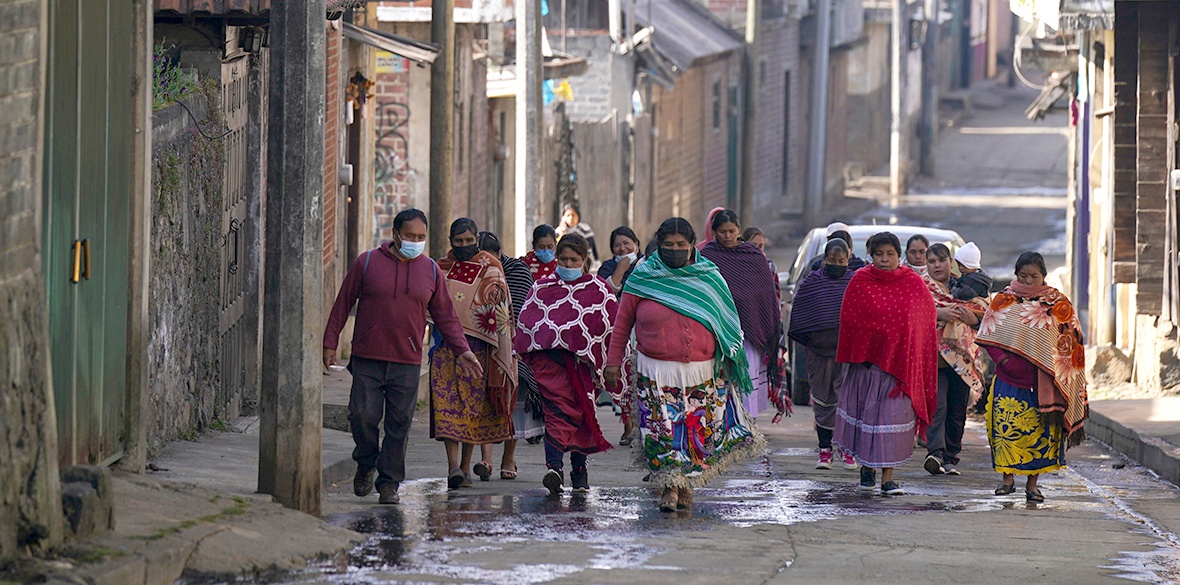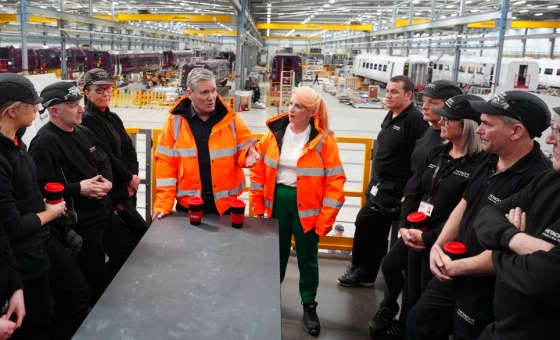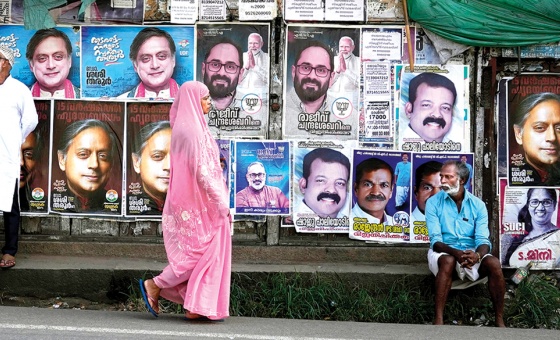This is the last article you can read this month
You can read more article this month
You can read more articles this month
Sorry your limit is up for this month
Reset on:
Please help support the Morning Star by subscribing here
AFTER three years away I returned to visit the country of my birth last month.
Like so many others forced to endure periods apart, I was excited to see my Mexican people, take part in our traditions and touch the faces of relatives I feared I might never see again.
On the 10-hour flight to the capital, Mexico City, I couldn’t stop thinking about all the families who have lost loved ones.
My last visit in December 2018 was to attend the swearing-in ceremony of the new president, Andres Manuel Lopez Obrador.
Amlo has had quite the political journey, starting off as a member of the centrist PRI party before seeing how, as the years passed, corruption and human rights abuses were so entrenched in Mexican politics that nothing short of a real transformation would do if almost eight decades of corruption and greed were to be well and truly cast aside.
Amlo’s vision is encapsulated by the phrase “La Cuarta Transformacion” — the fourth transformation.
The “4th” is intended to follow three previous periods of upheavel in Mexico’s history: independence from Spain (1810-21), the reform period (1858-61), and the Mexican Revolution (1910-17).
While all three previous events involved extreme violence and loss of life, Amlo hoped that the fourth transformation would be peaceful and bring a fairer, kinder world for the majority of Mexicans who have always lived in poverty or in fear of big bosses, many of whose descendants worked so hard to prevent him from winning a landslide in 2018.
I saw many positive examples of what the 4th transformation has achieved so far — but I don’t look at Mexico with rose-coloured glasses. There is still so much to be done.
While it was great to be back, I’m very much aware of the real concerns about human rights that still haunt my beautiful yet complicated homeland.
As a human rights activist, in addition to my work with Justice Mexico Now and international co-ordinator of the Peace and Justice Project, I had some meetings to discuss the plight of migrants.
I had an informal meeting with a representative of Serapaz, an established NGO which is seeking a more comprehensive public policy on migration as well as support and meaningful protection for human rights defenders and journalists.
Alongside a number of other NGOs, Serapaz has put its name to a policy proposal to address the parallel problem of the thousands of people who are forcibly displaced within the country.
It is lobbying for greater progress around the rights of children and young people, women and two other crucial issues: the continual disregard of environmental rights at all levels of society and the use of torture.
I also met the political analyst Alfredo Jalife-Rahme who presented his latest work focusing on migration, El Espejo Negro de los Estados Unidos (the Black Mirror of the United States), at the international book fair in Guadalajara.
He said that the migration situation is getting worse because US immigration policy remains intact — just as the Donald Trump administration left — with the only difference that President Joe Biden’s language is more polite towards migrants.
Although California is a state with more than 40 million inhabitants and the majority are Latinos, with a GDP of $3 trillion, which represents an economy on a par with Germany and/or Russia, Mexican migrants who live in the state send around $2.54bn in remittances home each year.
Sadly, Trump’s hatred and racism towards immigrants — especially Mexicans who emigrate to the US in search of a better economic life — remains and the situation is worrying.
We travelled to the southern border with Guatemala. In the chaotic city of Tapachula, I realised how many migrants from Central America, especially Haiti, were there.
I was told that the Chiapas state government is financially assisting migrant families to buy food. Both the state government and local NGOs are trying to assist with temporary shelters.
We saw checkpoints where local police and the national guard would stop cars and buses to check the travellers’ ID — Mexico requires everyone to carry photo ID document.
Police, citing Covid restrictions, didn’t allow me to visit a migrant shelter, many of which are repurposed factories such as a vast and redundant cotton mill that closed when the 1994 neoliberal Nafta trade accords put local companies out of business, sending hundreds of workers north to the US in search of work.
Alejandro Encinas is a human rights specialist who works as the minister for human rights, population and migration in Amlo’s government.
He spoke frankly about the almost impossible challenge of dealing with the rising number of killings and forced disappearances — around 52,000 unidentified bodies and 95,000 disappeared are the latest statistics.
“We came into government to bring the numbers down and where possible reunite families or at least give them definitive news of their missing loved ones,” he said.
He believes the investigation of disappearances is better organised now than under the previous administration when the federal police, local police, the army and the navy were involved, but often didn’t follow up cases, leaving families in limbo for years.
Encinas tells us that the work he and his colleagues do can be dangerous. When working in the field his colleagues would receive threats, mostly from organised crime, and they have to take refuge in military camps.
Several new institutions have been set up, such as the National Search Commission, the Migration and Refuge Commission, the Victims’ Assistance Commission, the Commission on Violence Against Women and the Truth Commission, to dig deeper into what really happened to the 43 students who famously disappeared from Ayotzinapa in September 2014.
Liaison with the Inter-American Commission on Human Rights has also improved, he says. These commissions have created a relationship of trust between the government and the relatives of the disappeared, he says.
He said the situation for migrants is worsening, as people arrive from all continents including Africa and Asia.
Around 110 nationalities are represented, all of whom want to continue their journey to US. Most are very young families, some are very young single mothers with babies. They travel in very precarious conditions and they are destitute.
Poverty, violence, displacement by international companies or even neoliberal governments, natural disasters and political struggles are all causes of the increase in numbers of migrants. The latest estimates put the annual figure at 300,000.
Despite the fact that Amlo’s government is investing in Mexico and developing economic and social policies for the benefit of the majority of the population, the changes we want to see are not yet in sight. These take a time.
Sadly Mexico has always been subject to the whims of the US. Pacts like Nafta have only facilitated drug-trafficking, money laundering and unequal trade agreements that caused more unemployment, poverty, displacement, disappearances and migration among other problems.
I spoke to a numerous people from across the political spectrum and it seems the majority of are still hopeful that we will see the fourth transformation bear some fruit before the end of the government’s term in 2024.
For this to happen, the international community must continue to support the Mexican government and other progressive governments seeking to achieve a more egalitarian world of peace and justice.
Don’t give up trying to become a better place, my “Mexico lindo y querido” (beautiful and beloved Mexico).











